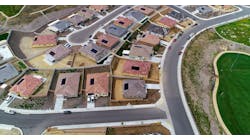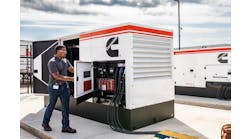The Importance of Microgrids for Marginalized Communities
How can microgrids help marginalized communities move forward? Schneider Electric’s Don Wingate offers insight and explains steps community leaders can take now in a Q&A with Microgrid Knowledge.
Don Wingate, VP of utility and microgrid solutions, Schneider Electric
What makes microgrids uniquely suited to help empower marginalized communities?
The core of the issue is the fact that economically disadvantaged and marginalized communities spend a larger percentage of their income on energy. Middle and upper economic classes may pay 1-3% of earnings on energy. Some studies have shown that disadvantaged communities pay as much as 25-30% of income on energy costs. As energy costs rise and reliability deteriorates, it affects those that can least afford it the most. It is vitally important to consider alternatives such as microgrids to provide lower cost energy to marginalized communities. In fact, the U.S. House Democrats recently issued a detailed climate plan for Congress to build a prosperous, clean and equitable energy economy. To succeed, the report says we must prioritize investment where it is needed the most, including rural and deindustrialized areas and low-income communities; and beginning to repair the legacy of economic and racial inequality that has fixed communities exposed to pollution and more vulnerable to the costs.
Microgrids are not a single technology, but rather a combination of proven technologies that are modular and scalable to meet the needs of divergent regions – small or large. They can be built quickly and customized to the needs of specific communities and municipalities. As a distribution network that manages distributed energy resources (DER) and interconnected energy loads, additional benefits include resilient and sustainable energy. Microgrids provide local generation and can operate as a single controllable entity working with the utility grid or in island mode. The control of an electricity system is shifted to the end-user by providing an advanced level of energy flexibility and management, which was historically only available to large energy producers and distributors. For marginalized communities, this means more energy savings, increased resilience, and independence from a utility.
Microgrids have especially made inroads into marginalized and remote communities because of their onsite renewable generation that provide the benefits of more affordable energy, minimized pollution and better air quality, and increased resilience all at the same time. For example, in the event of a severe natural disaster or an unexpected power grid outage, traditional fuel supply lines are disrupted. Microgrids can mitigate risk and help communities maintain power without immediate access to diesel.
Why is it important now, particularly in places like California, that we bolster energy resilience for these communities?
The electric grid is a century-old, complex network that’s become strained trying to keep up with the pace of growing energy demand. At the same time, California and regions alike prone to extreme weather that can lead to catastrophic natural disasters, such as wildfires and hurricanes, have much to gain from strengthening energy resilience. For example, the proactive and widespread electricity outages in California last year left hundreds of thousands of customers without power for hours, days and in some cases weeks. These factors alone have a major negative impact on the people and communities that depend on energy for basic human needs. When you add the negative economic impact of the COVID-19 pandemic, skyrocketing unemployment rates and the all-time high deficit state budgets are projecting, marginalized communities are the most affected. California has large segments of the population that need both energy and connectivity. Energy inequity is exacerbated with today’s “new normal” related to working from home, home schooling and in many cases sheltering in place while unemployed.
When utilities or commercial entities add large grid-scale solar or storage, it helps green the grid, but does not assist with resilience. Given microgrids can operate either in conjunction with or as an island from the utility grid, providing power even when the grid goes down, resilience dramatically improves when they are added behind the meter. Microgrids are one of the few resources we have that can deliver resilience along with several clean energy benefits. Deploying them in remote and disadvantaged communities in an important step to energy equity.
Improved economics and technology have made microgrids a viable solution to deliver digitized, decarbonized, and decentralized backup power. Obstacles need to be overcome to make it a reality. Regulatory barriers need to come down, interconnection processes need to be streamlined and grants and philanthropic efforts need to be tapped to accelerate the deployment of microgrids to help solve some of our most pressing energy needs.
How can microgrids also help communities manage energy costs?
Microgrids give communities control of their own power – offering them access to electricity through a combination of renewables, battery storage and other DER that can be quickly deployed when prompted. By increasing resilience, communities can limit the impact of costly power outages and support continuity of service at affordable costs. However, the microgrid use case not only embraces resilience and power system management, but also energy optimization. Brought on by less expensive and renewable DERs along with digitization via IoT, energy optimization enables better use of more sustainable sources and lowers costs by making the grid more functional behind-the-meter. Modern microgrids add energy management systems that orchestrate the optimal use of such DERs.
At the same time, microgrids offer day-to-day, high-value use cases that provide additional benefits to the end users. For example, microgrids allow renewable resources to participate in demand charge reduction programs and reduce time-of-use rate penalties. This can be particularly beneficial in regions with high energy consumption.
How can microgrids improve air quality? Why is it particularly important in these communities?
The ability for microgrids to deploy more zero-emission electricity sources help reduce greenhouse gas emissions, thereby enabling better air quality. Microgrids can balance generation from renewables, such as solar, with distributed, controllable generation. Thus, regions pursuing high levels of clean energy can especially benefit microgrids as they help achieve the full potential of intermittent renewable energy sources. For example, microgrids that include battery storage systems help balance production and energy usage. As more of our electricity starts to come from wind and solar, batteries can store excess electricity when the sun is shining and the wind is blowing, then deliver it during peak usage hours.
The proliferation of microgrids can mean the reduction in diesel generation in businesses that are located around communities, which in turn decreases emissions and improves air quality. This can be especially true for marginalized communities that are located around industrial manufacturing facilities.
What steps can community leaders take now to begin educating their communities about microgrids?
It is imperative that community leaders, regulators, legislators, and ethical businesses embrace the proliferation of microgrids to support first responders, health care, critical businesses and of course the marginalized community residents during disruptions brought on by natural causes or planned outages. In the case of Montgomery County, MD, they experienced first-hand what the needs were to support community members during an outage after a major weather event hit the area. Energy resilience meant that they could continue providing necessary leadership and critical city services even when the grid was down. And, with energy-as-a-service, the implementation of the microgrid did not strain the county’s bottom line.
Education is another important element. There are many Federal programs, such as FEMA’s Building Resilient Infrastructure and Communities program, and State Programs available to ease cost constraints. There are also numerous home energy management programs and incentives available.
Microgrids enable us to utilize energy that is smartly acquired, locally produced, and efficiently used. As we look to recover and rebuild from today’s turbulent environment, we must work together to fortify the grid for the future and ensure reliable power is accessible to all.
Don Wingate is vice president of utility and microgrid solutions and Schneider Electric.







